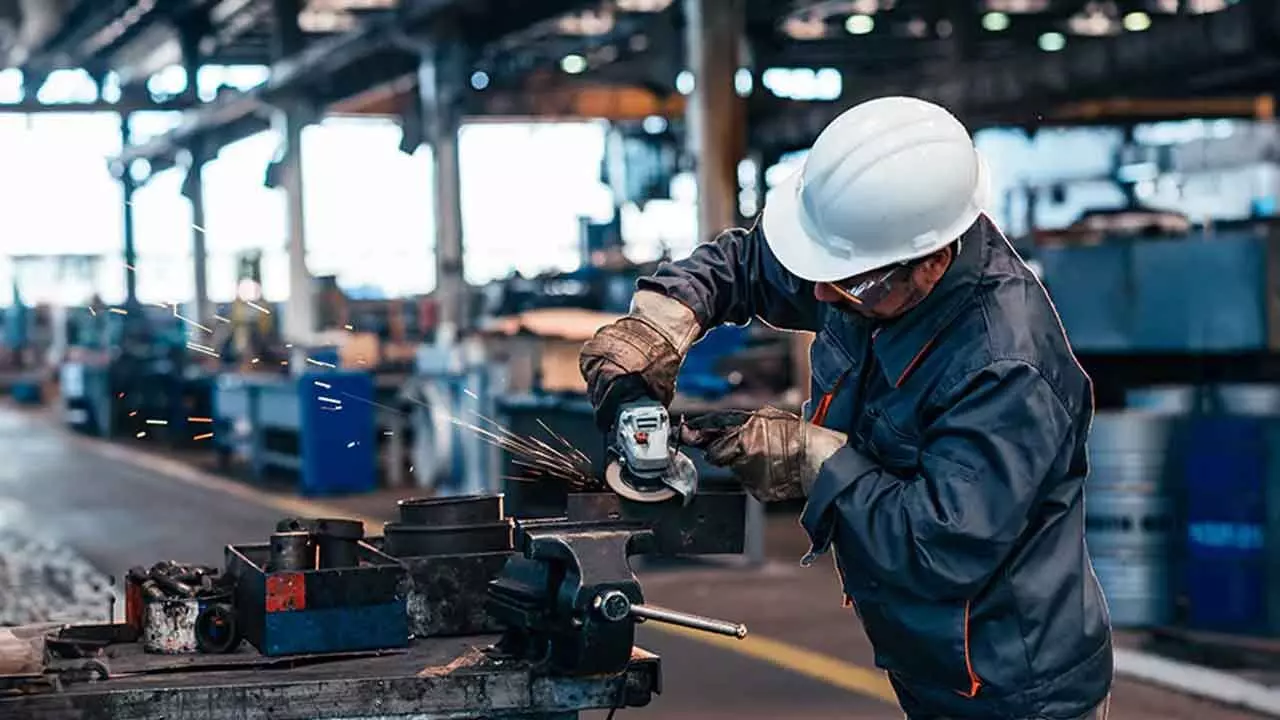India’s Manufacturing Sector Faces Growth Challenges Despite Govt Push
While the sector has shown potential with increased investments and supportive policies under the Make in India initiative, its contribution to GDP and employment has stagnated over the past decade
India’s Manufacturing Sector Faces Growth Challenges Despite Govt Push

Despite initiatives like reduced corporate tax rates and enhanced infrastructure spending, manufacturing’s share in GDP has not improved significantly, and its export performance remains weak. Challenges such as infrastructure bottlenecks, bureaucratic hurdles, and high import tariffs continue to hinder growth. To truly realize its potential, the sector needs effective policy implementation, diversified exports, and integration into global value chains
The manufacturing sector plays a crucial role in job creation, export growth, and overall economic development. The sector has the potential to absorb a large number of workers - critical for India which has a burgeoning population and high unemployment rates. A robust manufacturing base can enhance India’s global trade position by reducing dependence on imports and increasing exports of high-value goods. However, achieving this requires not just policy announcements but effective implementation and addressing deep-rooted challenges such as infrastructure bottlenecks, skill mismatches, and bureaucratic red tape.
While the budget provisions are promising, the real challenge lies in effective implementation. Delays in infrastructure projects or bureaucratic hurdles in availing tax benefits can dilute the potential positive impact on the manufacturing sector. The government needs to establish robust mechanisms for monitoring and evaluating the implementation of budget provisions. Transparency and accountability in the implementation process are crucial to ensure that the benefits reach the intended recipients.
The manufacturing sector’s performance is closely tied to global economic conditions. Factors such as fluctuating demand, trade tensions, and geopolitical instability can impact the sector’s growth prospects despite supportive domestic policies. The government must develop strategies to mitigate the impact of global economic uncertainties. This includes diversifying export markets, strengthening trade relations, and building resilience in the domestic economy.
India’s golden era of manufacturing
The current phase has been dubbed the “golden era” of India’s industrial boom by industry experts. Positive changes in the manufacturing sector, such as increased merger and acquisition activity, supportive government policies, expanded production capacity, and substantial investments from private equity and venture capital, are building a strong foundation for the nation’s long-term economic success.
India’s GDP growth is predicted to make the country a $5 trillion economy by 2025. The central government revised its capital expenditure on infrastructure development to Rs 11,110 billion ($133.3 billion) for FY2024-25, marking a 11.1 per cent jump from the previous year’s capex of Rs10,000 billion ($119.97 billion).
Total FDI inflows in the country in FY 2023-24 were $17.96 billion, and total FDI equity inflows stood at $11.54 billion. Mauritius (26 percent), Singapore (23 per cent), the USA (9 percent), the Netherlands (7 per cent), and Japan (6 percent) emerged as the top five countries for FDI equity inflows into India in FY 2023-24.
India has over 42 trade agreements (including preferential agreements) with various countries and regions. Corporate tax rates were slashed to 15 percent from 22 percent for new manufacturing units incorporated on or before from March 31, 2024.
The government launched the “Make in India” initiative on 25 September 2014 to facilitate investment, foster innovation, build best-in-class infrastructure, and make India a hub for manufacturing, design and innovation.
The government’s own data, however, shows the manufacturing sector has remained flat over the last decade in its contribution to the gross domestic product (GDP). Further, the sector’s share in total employment in the country has marginally declined over this period.
Data from the Ministry of Statistics and Programme Implementation shows the manufacturing sector contributed 17.3 percent to India’s GDP in 2013-14, a year before the “Make in India” initiative was launched. This rose to a little more than 18 percent over the next few years, to peak at 18.5 percent in the post-pandemic year 2021-22.
Since then, the sector has seen two consecutive years of declining share in the GDP - 17.7 percent in 2022-23 and 17.3 percent in 2023-24, the same as it was in 2013-14. While employment in the manufacturing sector has grown, the “Make in India” push has not resulted in manufacturing outpacing other sectors of the economy in employment generation.
Another priority area for the “Make in India” initiative was to boost exports and cut down on imports. The data over the last 10 years revealed the programme has failed to do the former but has been marginally successful in achieving the latter, although even this improvement has recently been reversing.
The World Bank, in the latest edition of its India Development Update made particular mention of India’s poor export performance in terms of contributions to GDP, in global value chains, and in employment generation. “India needs to diversify its exports and increase its participation in Global Value Chains (GVCs),” the report said.
“Exports are also relatively concentrated in goods and services that tend not to be labour-intensive,” it added. “As a result, trade-jobs linkages are not fully exploited.”
A major factor behind this decline, the report added, was the high import tariffs India imposes on key inputs used by India’s manufacturing sector. These tariffs, the report added, have raised production costs and made producers less competitive in international markets.

